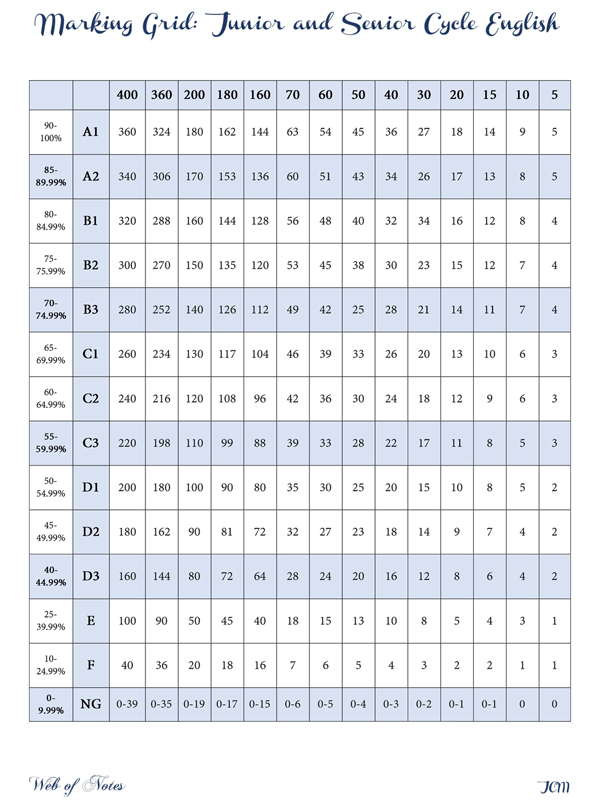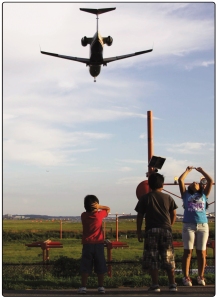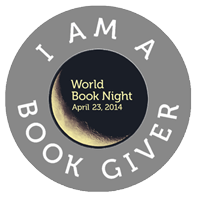Blog Archives
Extracts and Analysis: My Examiner’s Report – JC English 2013 (Ordinary Level)
Following the publication of the Chief Examiner’s Report for LC English 2013 (4th April) I looked over the report I submitted for JC English (Ordinary Level) 2013 after correcting a batch of just over 300 scripts last year.
Below are extracts from my JC Examiner report, followed by a brief analysis. The questions from the exam are quoted below, and the materials for the exam can be accessed here: 2013 Exam Paper, Source Paper (‘Paper X’), Marking Scheme.
Extracts
Analysis of Questions
Section 1
A (5 marks each)
1. What was Mr Perutka’s job?
2. Where was the tea house?
3. Where did the author go to swim and to fish?
4. Why was it impossible to travel by bus or car during the winter?
B (10 marks)
In paragraphs 2 and 3, what evidence is there that the author enjoyed the summer in his home village?
C (10 marks)
Explain any TWO of the following in your own words:
1. “… he folded iron like it was pastry… ”
2. “… making me realise … what a paradise surrounded me.”
3. “… excitedly ambushing my mother at the door…”
4. “… the snow served as a sort of muffler against noise…”
D (10 marks)
Based on what the writer says in paragraph 4, would you like to visit his village in the winter? Give reasons for your answer.
E (10 marks)
What impression do you get of the young boy in this passage? Give reasons for your answer.
- Many students achieved high marks. Some lost out on marks by only giving one reason or piece of evidence in their answers.
- 1A and 1B were answered with little difficulty, with many attaining maximum marks. However, some candidates wrote quite long passages for each part of 1A, and there was evidence later in these papers that the candidate ran out of time.
- In 1C, “ambushing” seems to have been misunderstood by many of those who selected number 3 to explain.
- 1E proved difficult for some: candidates seemed uncertain as to how to write their “impression” of the character in the text.
Section 2
Write a composition on ONE of the following topics (60 marks):
A. A Face in the Crowd
B. The Old Photograph
C. “It was the worst time ever to have no credit on my phone!” Write a story which at some point includes the above sentence.
D. A Blanket of Snow
E. A Person I Admire
F. It was a good lesson to learn
G. How I like to spend my spare time
H. Look at the photograph on Page 4 of Paper X. Write a composition based on this photograph.
- Every title was attempted.
- “It was the worst time ever to have no credit on my phone” was the most popular choice and prompted some good compositions. A ‘kidnapping’ or ‘being lost’ scenario was used by most.
- 2H was the least popular selection, and the majority of these answers were not compositions but rather a description of the photograph. They perhaps didn’t recognise that the image was to act as a stimulus or prompt.
- 2A, 2B, 2D and 2E were also popular.
- Candidates who planned in their booklets tended to write more coherently and with a better structure. Many answers in section 2 were commendable for their imaginative and engaging narratives.
Section 3
Answer EITHER A OR B (60 marks)
A. Your friend is coming to stay with you this summer. Write an informal letter to your friend suggesting some of the activities the two of you might do during his or her visit.
In your letter you should:
– Describe some of the activities that you have planned
– Explain why you think that your friend might like these activities.
OR
B. You have been asked to give a talk to first year students, welcoming them to your school.
In your talk you should:
– Describe some of the things that will be new to them in secondary school
– Give the first year students some tips to help them to settle in.
- Reasonably well answered. However, many did not engage with both parts of their chosen task (letter or speech).
- Majority of students had an appropriate layout for letter. The register was perhaps too formal in some letters and speeches.
- Standard of writing and the length of answers varied greatly.
Section 4
A (5 marks each)
1. What was the weather like on the day Mary met the woman?
2. Where did Mary think the woman had been standing?
B (10 marks)
At first Mary thinks the woman she meets is old. Why does Mary think this?
C (10 marks)
Which one of the following words best describes the woman Mary meets?
– mysterious
– friendly
– lonely
Give reasons for your answer.
D (10 marks)
Why do you think Mary isn’t more frightened of this unusual woman?
E (20 marks)
Name a NOVEL or a SHORT STORY you have studied where something unexpected
– Describe what happens.
– Did the unexpected event make the story more interesting? Explain your answer.
- 4A and 4B were answered particularly well and with little difficulty. In 4C and 4D many candidates only gave one reason for their answer (lack of development).
- 4D was misinterpreted by some to mean “why is Mary frightened of this unusual woman?”.
- In part 4E, some candidates answered on a play (e.g. The Field) rather than a novel, while many others did not convey how the “unexpected event made the story more interesting.” Those who engaged with all parts of the question did very well. The Outsiders, The Boy in the Striped Pyjamas, Kes and Holes were popular texts.
Section 5
A (5 marks each)
1. What used to be in the plastic bag?
2. Where was the plastic bag lying?
B (10 marks)
Describe two of the things the wind does in Stanza 2.
C (10 marks)
In Stanza 3, which one of the following descriptions do you prefer? Give reasons for your answer.
“It felt its way inside the bag
Like a hand inside a glove”
OR
“And like a puppet waking up
The plastic bag began to move.”
D (5 marks each)
1 In Stanza 1, describe the mood of the bag in the playground.
2. In Stanza 5, describe the mood of the bag in the sky.
E (20 marks)
Choose a poem you have read which is either happy or sad.
– Name the poem and the poet.
– Describe what happens in the poem.
– Pick one detail from the poem which shows that it is either happy or sad. Explain your choice.
- 5A earned the majority of candidates full marks. In 5B, the majority of the candidates transcribed the quote from the text but did not explain/elaborate or “describe” what the wind does as per the question.
- Candidates struggled with explaining their preference in 5C, and some had difficulty in identifying and describing a particular mood in question 5D.
- 5E was answered quite well, with ‘Mid-Term Break’ being the most popular choice by far. ‘Tich Miller’ was also quite popular.
Section 6
A (10 marks)
From your reading of this scene, what kind of person is Mrs Johnstone? Quote from the scene in support of your answer.
B (10 marks)
Based on the above scene, write the diary entry Edward might make after this conversation with Mrs Johnstone.
C (10 marks)
If you were directing the beginning of this scene, what instructions would you give to the actor playing Mrs Johnstone about tone of voice and body language when she says: “Now listen, Eddie, I told you not to come around here again.”?
D (10 marks)
If you were directing the end of this scene, what instructions would you give to the actor playing Mrs Johnstone about tone of voice and body language when she says: “Yeh. But keep it a secret, eh, Eddie? Just our secret, between you and me.”?
E (20 marks)
Name a PLAY or FILM you have studied in which there is a friendship between two characters.
– Name both of the characters.
– Which of the two characters did you prefer? Give reasons for your answer.
– Do you think it is a good friendship? Give reasons for your answer.
- 6A was answered very well by most. Many diary entries were rewarded with full marks. Some candidates found 6C and 6D very demanding, with some evidence shown that they were not familiar with or had very little experience with writing instructions to actors.
- Our Day Out and Romeo and Juliet were the most popular choices in 6E, but some candidates selected a poem or novel to answer 6E.
Section 7
A (5 marks each)
Look closely at Page 2 of Paper X.
1. What is the new website address of Fota Wildlife Park?
2. Name one other way Fota Wildlife Park uses the internet to let people know about the park.
B (10 marks)
Do you like the way that the brochure uses images on Page 2 of Paper X? Give reasons for your answer.
C (10 marks)
Look at the slogan at the top of Page 2 of Paper X. ‘A Wild Day Out’ Do you think it is a good slogan for a wildlife park? Give reasons for your answer.
D (10 marks)
Look at the text and the pictures on Page 2 and Page 3 of Paper X. Who do you think this brochure is aimed at? Give reasons for your answer.
E (20 marks)
You have been asked to design a poster to advertise a popular tourist attraction. You may not use Fota Wildlife Park in your answer.
– Name the tourist attraction (the attraction can be real or imaginary).
– Describe one image you would include on the poster and explain your choice.
– Write a slogan to use on the poster for the tourist attraction.
– Explain why this would be a good slogan.
- Answers to 7A largely achieved high marks. Answers to 7B clearly stated whether they liked or disliked the brochure’s use of images, but failed to give more than one reason for their answer. Likewise in 7C which was answered quite poorly.
- In 7D, some did not identify who the brochure was aimed at, with some stating that it was aimed at the animals.
- Many struggled with the describing and explaining in 7E and a number of students actually drew their poster and wrote one or two sentences under it rather than describing the image they would use and explaining why their chosen slogan “would be a good slogan”. Few achieved more than 14 marks for 7E. The most popular tourist attractions were zoo and waterparks.
Recommendations to Teachers and Students
- Teachers should ensure that students are familiar with both the format of the exam and what is expected in answers relative to the attainable marks.
- Teachers should ensure that students are familiar with answering a broad range of questions, particularly giving instructions to actors and describing images.
- Sufficient time should be spent with candidates practising exam techniques, timing, and a broad range of questions, particularly instructions to actors, terms used in media studies, identifying the intended audience, using the appropriate register, and how to both read and “describe” images.
- Candidates should be aware of timing and, should they have spare time at the end, they should re-visit or add to answers already written rather than attempt an extra section.
- Candidates should read questions very carefully and be aware that they must engage with all parts to a question they choose to answer. Ignoring one part of a question severely limits the marks which can be rewarded.
- Candidates should be aware of how marks are rewarded. The development of answers, giving more than one reason, etc. when asked for “reasons” or “evidence” or if they are asked to “explain” their choice/preference/reason is key to attaining high marks.
- Candidates should be encouraged to plan in their exam booklets – particularly for for Sections 2 and 3. Evidence from the booklets shows that it helps students to create a coherent and structured piece of writing.
- Candidates should also take care with syntax and paragraphing, in particular throughout Sections 2 and 3.
Brief Analysis
A lot of what is mentioned in the extracts above will undoubtedly be familiar. Nevertheless, there are a few things which I would like to address in a bit more detail.
When answering the questions
Something that we so often explain and justify is worth spelling out again – and not for the last time: ANSWER THE QUESTION.
Even if it was the only thing buzzing around in their heads before starting the exam, they still have to know how to implement this mantra. Careful attention should be given to how a question in phrased: What exactly is it asking? How many things need to be addressed in my answer? Does the question have more than one part? Did I engage with all parts of the question (“describe… and explain…”)?
The number of MARKS available for each question is also very important when you ANSWER THE QUESTION.
Also, TIMING.
Planning
There is evidence in the report above and in Chief Examiners’ Reports that some level of planning for an answer before writing (both at JC and LC) pays off (and yes, we do read everything you write so we can give you the best mark possible!). For example:
JC 2006 Report:
“Examiners commented that candidates who displayed evidence of essay planning (webs, skeleton plans etc.) wrote more coherent essays and scored significantly higher marks.”
LC 2005 Report:
“It is advisable to encourage candidates to spend a little time thinking before writing. It is important that candidates try to form an approach to a set task before immersing themselves in it totally. This is not to suggest long and elaborate plans. A brief reflection on the terms of the question is often sufficient to alert the candidate to the full implications of that question.”
JC 2000 Report:
“Examiners found that those candidates whose work showed evidence of essay planning (brainstorming webs, skeleton plans etc) tended to score significantly higher than their counterparts who wrote without a plan.”
The most recent LC Chief Examiner’s Report clearly encourages the adoption of “a process approach to writing, whereby students learn to research, plan, draft, re-draft and edit their writing” in class. The skills they hone through such practice can help them plan an answer more effectively in an exam.
Instructions to Actors
My advice: don’t just read the text aloud in class – set the scene, act it out!
Letters and Diaries
I feel that letter and diary writing have great potential for authenticity in writing. However, unlike the traditional formats and mediums the state exams seem so eager to push without a second thought, when I say ‘letter’ and ‘diary’ I mean all their forms – to use two basic examples, emails and blogs.
I’ve heard it said that there is nothing like receiving a handwritten letter in the post. I don’t doubt it. But the most recent memory I have of seeing a newly-posted handwritten letter is from when I was about 6, which was in the ’90s.
(Aside: Saying “the ’90s” like that makes me sound much much older than I am…)
With that in mind, let’s look at the 2013 Chief Examiner’s Report for Leaving Cert English:
“In future examinations where candidates are required to write letters in answer to questions greater attention will be paid to the rubrics appropriate to the task (e.g. return address, date, salutation and closing signature). Any standard formatting of these rubrics will be acceptable.”
In response to that, one might say: “Ok, the basic structure/format of a letter. We can work with students on that.” I feel that such a reading misses the glaring point: letter writing is scarcely used today.
Let’s apply this point to the question asked of JC 2013 Ordinary Level students in Section 3:
Your friend is coming to stay with you this summer. Write an informal letter to your friend suggesting some of the activities the two of you might do during his or her visit. In your letter you should:
– Describe some of the activities that you have planned
– Explain why you think that your friend might like these activities.
I have no doubt in my mind that if the question asked “Write an email…” or “Write a facebook message…” students would have scored noticeably better.
The diary entry question (6B) was very well written, but I’d again suggest modernising it (let’s pause for a moment: who are sitting these exams? Think of them as the intended/target audience.): replace “diary entries” with “blog posts”.
Teaching letter and diary writing. Teaching email and blog writing. Which of these options would more beneficial to students?
Visual Texts
Pick up any of my schemes of lessons at random, and I can guarantee you that some form of visual texts will make an appearance.
I noted above that 2H was the least popular selection, and of those who selected the question, the majority only offered a short description of what was happening in photograph.
It would be easy to over-analyse the fact that it was the least popular option in the scripts I marked, but given the variety of options students had in Section 2 which may have suited them better (option 2C, I’m looking at you) it might be a fruitless task.
However, the Media Studies section is a different ball game. Any argument I could have posed regarding 2H is given more substance in this section.
Of the scripts I had, only a few achieved higher than 40-45 marks out of 60 in this section. Don’t get me wrong, 45 out of 60 is a good mark. What I’m concerned about is the lack of familiarity and, perhaps, the lack of confidence, displayed when approaching visual texts.
LC 2013 Report:
Higher and Ordinary Level: “The Leaving Certificate English Syllabus envisages the subject ‘English’ as ‘not limited to the written word’ (Leaving Certificate Syllabus, English, para. 2.6) and it identifies the importance of visual literacy. At both levels, examiners noted that close ‘reading’ of visual images was not always strongly evident. Candidates taking the examination in 2013 were variously required to draw inferences [OL Paper 1, Text 3 Question (iii)], consider the effectiveness of visual images in developing understanding [HL Paper 1, Text 1, Question (ii)] and engage with the imagery [HL Paper 1, Text 3 Question (ii)]. Candidates would benefit from a greater acquaintance with the concepts and terminology of visual literacy, including those associated with films.”
“Candidates would benefit from a greater acquaintance with the concepts and terminology of visual literacy, including those associated with films.”
LC 2008 Report:
Ordinary Level: “There was some improvement noted in dealing with visual literacy i.e. Text 3, but it remained the least frequently answered. Responses to the set tasks for Text 3 tended to be less accomplished than those in the other two text options”
JC 2006 Report:
Foundation Level: “Examiners reported that [Media Studies] was a very well answered section of this year’s paper and that candidates engaged well with the visuals on Paper X which generated a greater level of response than in previous years… Question E seemed to be poorly answered by candidates. As in previous years, candidates tended to respond only in terms of like or dislike. Some of the higher performing candidates attempted an analysis of colour, background etc. However, the majority of candidates appeared unable to articulate such a response.”
Ordinary Level: “[Media Studies] was the least favoured and most poorly answered of the optional sections on the paper. In general, the standard of answering was disappointing in this section.”
LC 2005 Report:
Ordinary Level: “While candidates often dealt effectively with individual texts, they did not seem to have developed their skills of critical and evaluative reading of a wide variety of texts – especially visual texts: and writing equally well in a wide variety of forms and language registers.”
Ordinary Level: “Reading and writing about visual texts are important capacities in the increasingly image-saturated nature of contemporary society. Candidates would benefit from a greater development of these capacities.”
Ordinary Level: “A number of priority areas are being recommended for close attention in the context of learning and teaching in preparation for the examination. These are – the focused acquisition and development-through-use of a range of language management skills to include those skills that pertain to the development of visual literacy…”
JC 2003 Report:
Foundation Level: “Candidates should have experience of a wide range of advertisements and practice written analysis. Candidates appear to have most difficulty in trying to articulate and find the correct terminology to describe the image they see.”
LC (Ordinary) Report 2001:
“while candidates often dealt effectively with individual texts, they did not seem to have developed their skills of critical and evaluative reading of a wide variety of texts – especially visual texts.”
“The majority of candidates had great difficulty in reading the visual images at the level, and with the focus required. In general, candidates seemed much less sure of how to approach the tasks in this visual section than in the more conventional printed Text 1 and Text 2.”
“Candidates had the choice of imaginatively engaging with one of six visual images of Text 3. As in the Comprehending Section, not many candidates chose to deal closely with the visual texts. Those, however, who based their writing on an individual interpretation of the chosen visual text and shaped it so as to integrate the key elements of story – time, place, action, critical event, etc.,- produced by far the more effective responses… A basic technical vocabulary would assist candidates in responses which include reference to film in the Comparative Section and to visual stimuli in the Comprehending Section.”
Little mention is given to candidates’ performance in relation to visual texts at Higher Level in comparison to Ordinary and Foundation Levels:
JC 2006 Report:
[Media Studies]
“Too often opinion is baldly stated without the grounds for that opinion being demonstrated by reference to the relevant elements of the text under discussion.”
“The picture prompt [Question A] showed the furrowed brow of an elderly farmer beneath the peak of a tweed cap. While most candidates correctly identified it as such some were inspired to extraordinary and surreal interpretations of the image. All answers giving a clear and well-supported interpretation of the picture were accepted.”
“[Question B) proved to be a good discriminator between candidates. At lower levels of performance unsupported statements of opinion typified answers. At higher levels answers showed awareness of the techniques of advertising which were correctly identified in the text and appropriately commented upon.”
LC 2005 Report:
[General Vision and Viewpoint: 2(a)]
“While many candidates were clear as to the general vision and viewpoint of the text some found it more difficult to deal with ‘how’ the vision was communicated. The majority, however, were able to demonstrate the ‘how’ and some examiners noted fine responses here when candidates were dealing with techniques used in film and drama.”
JC 2003 Report:
[Media Studies]
“As noted in other sections, candidates were prone to several broad weaknesses. Many answers were no more than cut and paste extracts from the pictures and words given on the Paper X. The supplied text was generally inadequately exploited for quotation and / or reference.”
“[Question 1] Parody is a difficult concept which presumes an understanding of the chosen form to be parodied. The terms ‘spoof’ and ‘parody’ appeared to puzzle many candidates, even those who demonstrated ability and competence elsewhere in this section in their answering. Nevertheless, many answers did engage with the idea of the advertisement as ridiculous or ‘over the top’.”
“[Question 2] proved an effective discriminator in identifying candidates who had been well taught and who understood the technicalities of advertising in general and of this advertisement in particular. Better answers included clear statements of points with well-chosen examples from the text.”
LC 2001 Report:
[Section 1: Text 4, Question A]
“[Part (i)] was a popular option with the better responses focusing clearly on the ‘overall’ sense of Irishness portrayed in the images. Ireland’s uniqueness and its ability to embrace the new while treasuring the traditional featured strongly. Some responses suffered from a tendency to give an account of each of the images in turn.”
“Images 2 and 5 were generally favoured [for part (ii)] and candidates had little difficulty in justifying their choices.”
“Images 4 and 6 were generally deemed to be least suitable [in part (iii) and, again, answering was focused and energetic.”
JC 2000 Report:
“The Media Studies question featured a page from a teenage magazine. The stimulus provided was bright, attractive, and accessible. Most candidates were able to respond to the contents page in a personal way, and to articulate an opinion on the “usefulness” of teenage magazines. The questions that asked candidates to critically analyse and to compose editorials were the ones that proved most challenging. The conventions and register appropriate to writing an editorial seemed to present difficulty for some candidates. In writing their own editorial statements, some candidates employed creative modelling of the stimulus piece to good effect.”
The fewer number of mentions in comparison to Ordinary and Foundation Levels is likely due to the nature of the questions at LC and JC. This might raise another question, a question which I’ve been prompted with in several ways both during and since my teacher training: is there a perception that visual texts are as being ‘better suited’ to these levels than at Higher Level? I hope not. If there are those who think this, I hope the number is small; the opportunities which visual texts present for both students and teachers are countless.
Posters, cartoons, films, print advertisements, TV adverts, photographs, sketches, statues, signs, greeting cards, the covers of books/DVDs/Blu-Rays/games/albums, your Facebook and Twitter profile pictures and cover photos, the background on your phone and computer, the wrapper designs of bars of chocolate – in one way or another, these are visual texts and it’s nigh impossible to escape them in our day-to-day lives.
Answering questions based on visual texts shouldn’t be a daunting task for students. The challenge is to get students to notice images. To think about them. To offer their own reading of a text with confidence. And they don’t need to become pretentious to achieve this.
From there, with a little guidance and practice they can learn how to ‘read’ images, how to describe them, how to convey the impact it has, explain why they are drawn to it, talk about their opinions on it…
To me, these are very important skills. Do we allow students enough opportunities to develop these skills? I think learning about ‘function’ of advertisements, using terminology such as ‘target audience’, and so on, should stem from developing their skills rather than dictating or shaping how students reach an understanding and appreciation of visual texts. Likewise with how students understand and comment on imagery in poetry at all levels, for instance.
LC Marking – PCLM Explained
|
Purpose |
Engagement with the task. | Clarity of Purpose
|
| Clarity | Sustaining your response throughout your answer. | Coherence of Delivery
|
| Language | Appropriate to the task (vocabulary, style, punctuation). | Efficiency of Language Use
|
| Mechanics | Spelling and grammar. | Accuracy of Mechanics
|



























You must be logged in to post a comment.